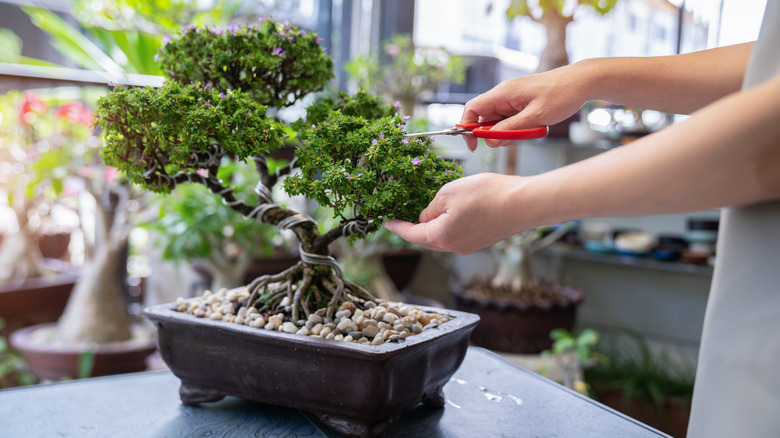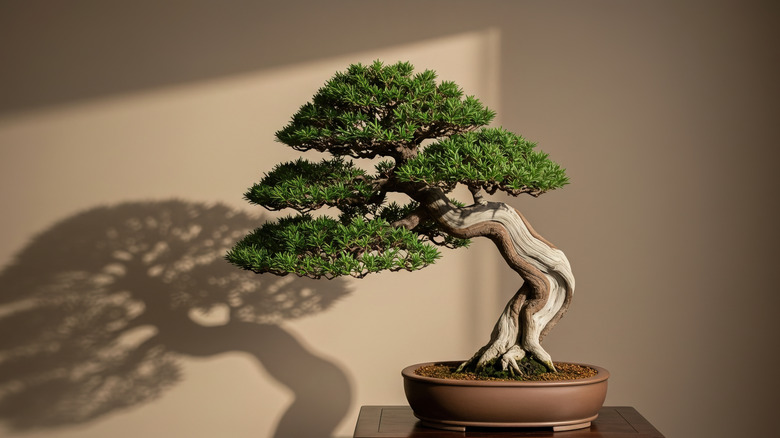The Reason Bonsai Trees Are So Expensive
Bonsai trees are among the most expensive plants in the world, with some collectors shelling out millions of dollars for particularly impressive, prize-winning, or ancient specimens. Cheap trees selling for as little as $10, such as Costco's bonsai trees, are a good buy for beginner enthusiasts, but an example that honors the culture and tradition of these plants will always be pricey. This is because these tiny trees must be carefully groomed to achieve a balanced, sculpted result, which can take years, specialized tools, and a great deal of patience.
Growing and caring for a bonsai tree is an art form, and, as with any art piece, the more impressive, rare, or storied the piece, the higher its value. The most expensive bonsai come with centuries — sometimes even millennia — of history, having been passed down through generations of dedicated bonsai masters and artists. Other factors such as species, transportation costs, and the pot it comes in can all impact the price, too.
What makes a valuable bonsai tree?
The variables that most directly impact the value of a bonsai tree are age and design. Keeping these fragile plants alive and prosperous for a long time is no small feat. Their small containers and sculpting needs mean constant attention and special practices such as frequent fertilization or specific watering habits. A bonsai tree is a high-maintenance house plant best avoided if you live a busy life, but if you're willing to put in the time and effort, pruning, shaping, and caring for it can be an incredibly fulfilling experience. In fact, it's the basis of an entire culture that has grown and evolved around these gorgeous little plants for generations. It's meditative, intentional, and demands perseverance.
Those knowledgeable will look towards qualities like surface roots, trunk thickness, bark texture, the inclusion of deadwood, and other detailed elements when asserting the value of a bonsai tree. The more intricate its design, the more effort went into shaping it. And that effort is expensive. In fact, enthusiastic collectors may look for bonsai that were designed by specific artists, that have received awards, or that have belonged to prestigious families.
Then, there is the tree species to consider. Chinese elm or Ficus are more widespread and readily available than species like Japanese white pine or Japanese black pine. Keep in mind that bonsai trees are not dwarfed species but regular trees kept small and contained through elaborate methods. They can be planted from seeds or collected from trees in the wild, so the trickier it is to find a specific species, the rarer a bonsai made from it will be, and therefore the more expensive.

